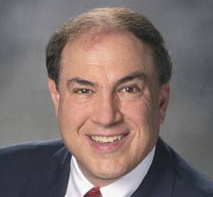Gelman: Preparing for the Next Epidemic of Occupational Disease
Monday, October 30, 2023 | 0
A recently published standard establishes minimum requirements to reduce the risk of disease transmission by exposure to infectious aerosols in new buildings, existing buildings and major renovations.

Jon L. Gelman
Infectious aerosols are tiny, exhaled particles that can carry disease-causing pathogens and are so small that they can remain in the air for long periods and be inhaled. This standard would reduce occupational exposure to SARS-COV-2 virus, which causes COVID-19; influenza viruses; and other pathogens that cause major personal and economic damage yearly and impact the workers' compensation system.
The American Society of Heating, Refrigerating and Air-Conditioning Engineers (ASHRAE) has adopted Standard 241, which provides requirements for many air system design, installation, operation and maintenance aspects.
Important aspects of the standard include:
- Infection risk management mode. Requirements of Standard 241 apply during an infection risk management mode (IRMM) used during identified periods of elevated risk of disease transmission. AHJs (authorities having jurisdiction) can determine when the enhanced protections of Standard 241 will be required. Still, its use can also be at the discretion of the owner/operator at other times; for example, during influenza season. This aspect of Standard 241 introduces the concept of resilience — the ability to respond to extreme circumstances outside normal conditions — into indoor air quality control design and operation.
- Requirements for equivalent clean airflow rate. Other indoor air quality standards, including ASHRAE Standards 62.1 and 62.2, specify outdoor airflow rate and filtration requirements to control normal indoor air contaminants. Standard 241 breaks new ground by setting requirements for equivalent clean airflow rate; the flow rate of pathogen-free airflow into occupied areas of a building that would have the same effect as the total of outdoor air; filtration of indoor air; and air disinfection by technologies such as germicidal ultraviolet light. This approach allows the user of the standard flexibility to select combinations of technologies to comply with the standard that best satisfies the economic constraints and energy use goals.
- Requirements for use of filtration and air cleaning technology. Dilution of indoor air contaminants by ventilation with outdoor air can be an energy-intensive and expensive way to control indoor air quality. Standard 241 provides extensive filtration and air cleaning requirements to effectively and safely meet equivalent clean airflow requirements efficiently and cost-effectively. These include testing requirements to establish performance and to demonstrate that operation does not degrade indoor air quality in other ways; for example, by elevating ozone levels.
- Planning and commissioning. Standard 241 provides assessment and planning requirements culminating in developing a building readiness plan, a concept carried over from the work of the ASHRAE Epidemic Task Force. It also describes procedures for commissioning systems to determine their installed performance.
"Standard 241 represents a significant step forward in prioritizing indoor air quality," said 2022-23 ASHRAE President Farooq Mehboob, Fellow ASHRAE. "By implementing the requirements outlined in this standard, we can improve the health, well-being and productivity of building occupants. This standard empowers building owners, operators and professionals to take proactive measures in safeguarding indoor environments. It's an essential tool for creating healthier indoor environments and promoting sustainable practices."
While not an American National Standards Institute plan, the consensus process from project approval, development and final approval of this standard, including a public review, took six months from authorization to completion and only four months of development time, dating from the first meeting of the project committee.
“Volunteers and staff dedicated their expertise and thousands of hours of their time to address this urgent industry and societal need,” said ASHRAE Presidential Fellow and Standard Project Committee 241 chair William Bahnfleth. “The development of this standard shows not only ASHRAE’s ability to respond rapidly to a societal need, but also a steadfast commitment to the health and safety of people in buildings everywhere. This is a significant achievement and milestone in connecting building design and operation with public health.”
The Standard 241 committee stated that it will continue improving sections of the standard, adding requirements, clarifying requirements and developing tools to help the public use it. Industry and consumer-friendly resources such as courses, podcasts, fact sheets and information events will be introduced.
Claimants' attorney Jon L. Gelman is the author of "New Jersey Workers’ Compensation Law" and co-author of the national treatise "Modern Workers’ Compensation Law." He is based in Wayne, New Jersey. This blog post is republished with permission.







Comments